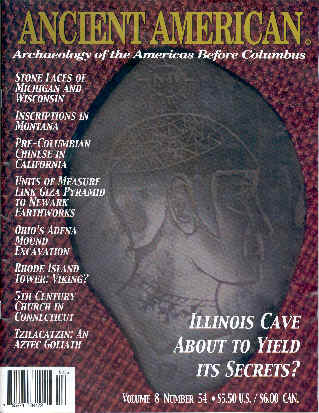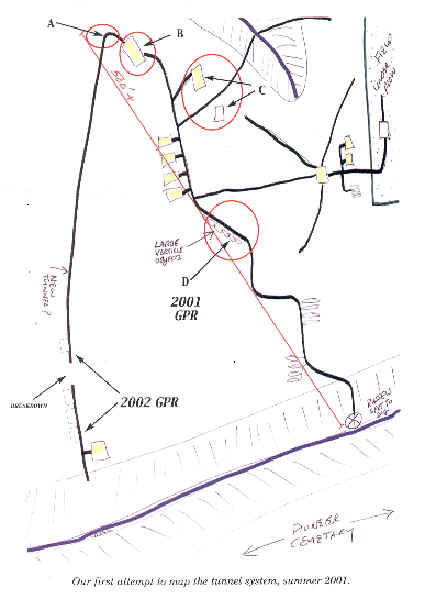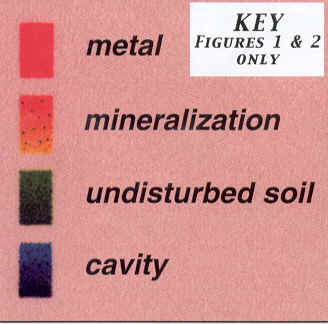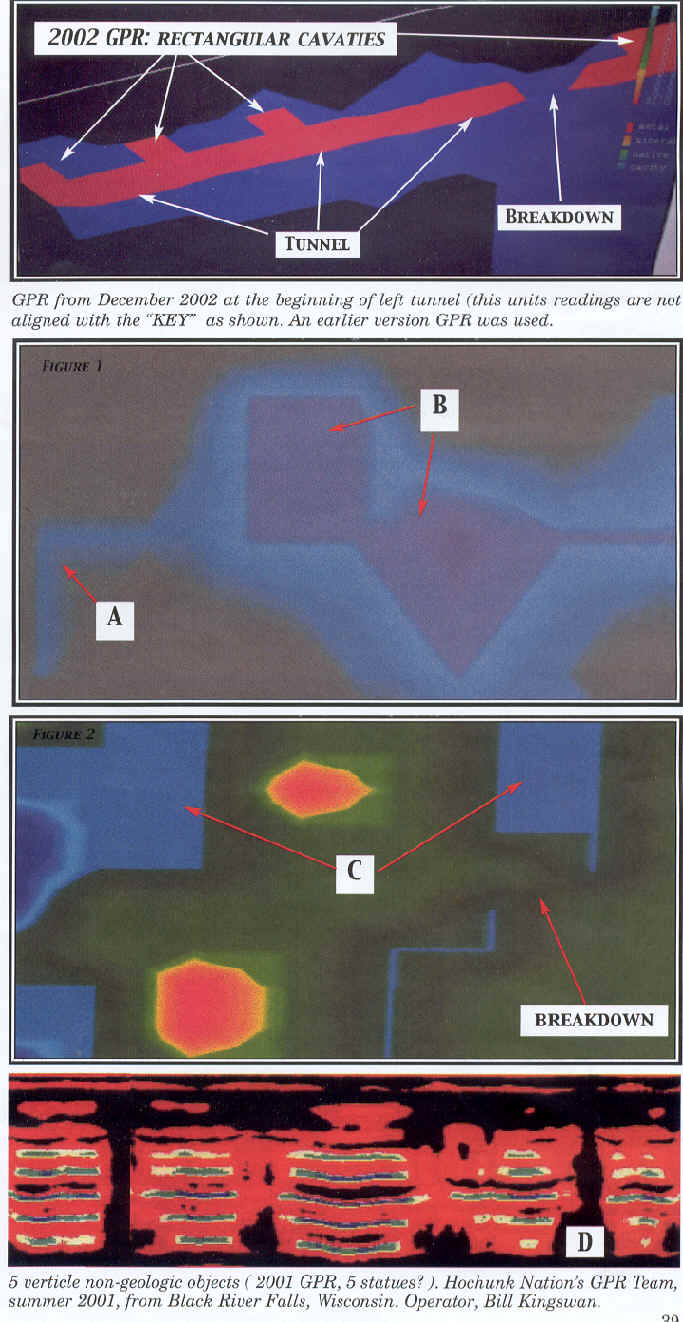
Issue 54

Illinois Update:
Embarras Site, December 2003
By Wayne May and Frank Joseph
Since July 2003 we have been trying to gain access to the Embarrras site at the base of the bluff, which is difficult to reach. We have now given this up because it has been too much trouble with many delays. We have placed much expense and time to arrange for all parties to converge and begin excavation. We will not be excavating at the location that we believe served as a main door at one time past.
We will be selecting a spot on top of the bluff property. This puts us at the greatest distance to attempt entrance with the most cost. The landowner continues to support our work to expose the tunnel system which is beneath his property.

On October 18th, we met at Olney to begin our first leg of pre-excavation preparation. We drilled two 6" shafts on the side of the tunnel, one at 40' the other at 60'. The purpose was to check our reading on the GPR scans which were published in the June Issue, Number 51 of AA on page 37.
The 6" shafts will show up nicely with our GPR scan so we can confirm our depth and width readings received on that GPR scan. Reason to confirm is monetary. We have enough money for two days ($16,000 per day) of drilling with the 48" drilling shaft which will give us an entrance. We want to be sure (as best we can) that we are on top of the tunnel system at the best location.
The drillers have told us repeatedly, that a 36" wide tunnel could be missed and we could drill right past the cavity. We are doing all we can to insure success at the distance which we feel is a 40 to 60 foot depth. However, if our depths are wrong, we can determine this by scanning the two 6" shafts as a measure against our previous scans which will be obtained early December. This could be a very significant find in the history of archaeology.
Since the discovery of Burrows Cave (1982) containing literally thousands of stone and golden artifacts from Roman-era North Africa, the search has been undertaken by several men. The site Ancient American has been working on is in Richland County, Illinois. There are other claims to this cave find of 1982 in Marion County, Illinois.
During November 2003, modern ground-penetration radar-scans of its suspected location and infra-red scanning have yielded additional provocative images of dead-straight corridors leading to rectangular and triangular chambers sixty feet beneath the surface of farm-land in southern Illinois, near the west bank of the Embarras (pronounced "Ahmbahrah"), a tributary of the Wabash River.
Exceptionally detailed readouts actually reveal a disconnected series of subterranean rooms with average dimensions of roughly twelve by fifteen feet. They appear to have originally formed an inter-connected network since divided by the collapse of other tunnels destroyed probably by seismic activity over the last two millennia. Southern Illinois is known for its geologic instability, and experienced North America's most sever known earthquake, the New Madrid, in 1812. Reaching a Richter Scale degree of 8.7, it temporarily reversed the flow of the Mississippi and Ohio River, and rang church bells across the continent as far away as Boston. Given the tectonic nature of this region, the survival of any underground features for 2,000 years attests to their strong construction. Although testing for their age has not yet begun, they are not part of some modern mining, sewage plumbing or drainage works, because no excavation of any kind has ever been allowed by the present owners, direct descendants of the same pioneer (4th generation) families who occupied the Embarras in the early 19th Century.
If this is the site found in 1982, analysis of the more than 7000 artifacts already removed from that cave mostly implies that they were made by refugees from the Roman conquest of North Africa, in 41 AD. Faced with either extermination or evacuation, it is believed the defeated leaders of Mauretania, a once-powerful kingdom in present-day Morocco-Algeria, fled across the mid-Atlantic Ocean. Arriving in the Americas, they battled tribes of native peoples, until finally making a home for themselves in southern Illinois. There, they excavated a labyrinth of tombs for their privileged dead, portrait stones of loyal followers, and a royal treasure (see AA#16).
A new determination on a designated spot to drill will be forth coming. A December or January attempt to open is very likely.


Use your browser to return or click here.